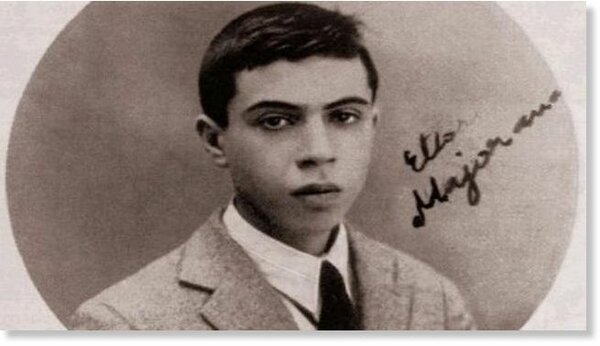
In Nature today an international team of researchers from TU/e and QuTech (TU Delft), among others, present the most important clue for the existence of the mysterious Majorana particle. In 2012, this collaboration, led by Leo Kouwenhoven (QuTech, Microsoft) and Erik Bakkers (Eindhoven University of Technology), found the first signs for the presence of the particle that is simultaneously its own anti-particle. Thanks to improved materials, these original experiments have now been repeated and the signal found follows exactly what the theory predicts for the particle. This result brings definitive evidence for the particle that bit closer.
In 1937, Ettore Majorana predicted a new fundamental particle, which was later named after him: the Majorana particle. This particle has the property that it is its own anti-particle. That is special, because usually an anti-particle has an opposite property, like a different charge. So the positron is the antiparticle of the electron.’
Majorana quasiparticles appear in materials under very specific conditions. If a nanowire made from a semiconductor is connected to a superconductive material, researchers observe a so-called ‘zero-bias peak’ in certain electric and magnetic fields. This signal is an important characteristic of the presence of Majorana particles.
Worked hard on improvement

In the first experiments, in 2012, the zero-bias peak was full of noise and was difficult to see. As a result, the appearance of the Majorana particle was open to question. In the years that followed, researchers worked hard to improve the theory, materials and its production in experiments.
During the past few months, the research of Kouwenhoven and Bakkers has reached several milestones very quickly. Thanks to an advanced quantum chip with improved materials and very clean contacts, they can now demonstrate improvements in high-quality interfaces and superclean Majorana transport. The chip also contains so-called ‘nano hash tags’ that make the exchange of Majorana particles possible in the future. The Delft-Eindhoven team used this improved chip to refine the quality of the 2012 measurements. The height of the zero-bias peak is now exactly what the theory predicts. ‘This is an important indication that it is indeed a Majorana,’ says Kouwenhoven. ‘It is the new standard in Majorana country,’ says Erik Bakkers.
Perfect quantum computer
The definitive proof will have to follow when two Majorana particles change places. Moreover, this could signify the impetus for a qubit, the building block of a quantum computer. ‘Thanks to their unique physical characteristics, Majorana particles are much more stable than most other qubits,’ says first author Hao Zhang, of TU Delft.
‘Creating and controlling the Majorana particles to build the topological quantum computer is still a challenge. With the control and insight that has now been achieved, quantum information based on Majorana particles can be explored.’ This work is the result of collaboration between QuTech, TU Delft, JQI(Maryland), Microsoft, TU Eindhoven and UC Santa Barbara.
Look here for a timeline of the quest for the Majorana.
Reference
Hao Zhang et al., Quantized Majorana Conductance, Nature (28 March 2018, online). DOI: 10.1038/nature26142